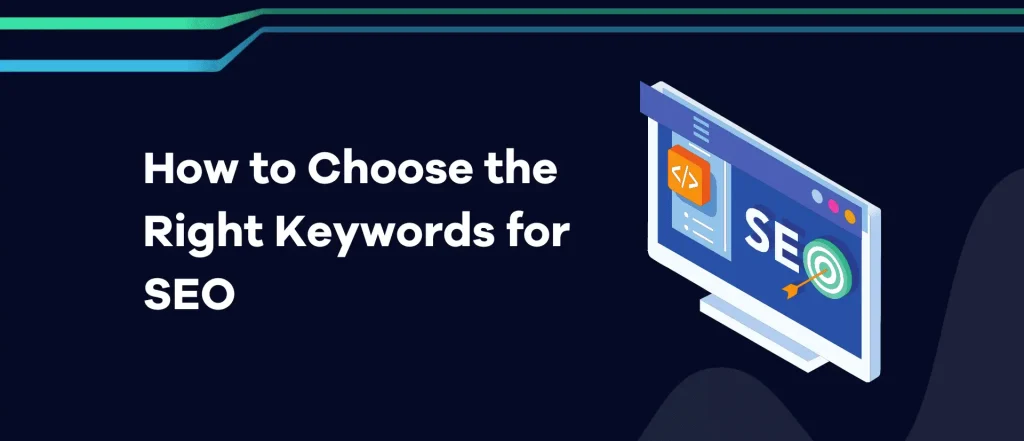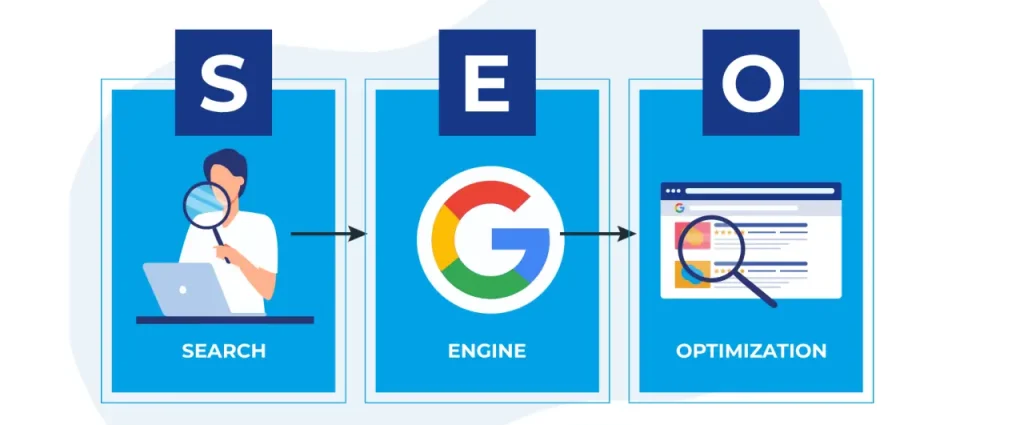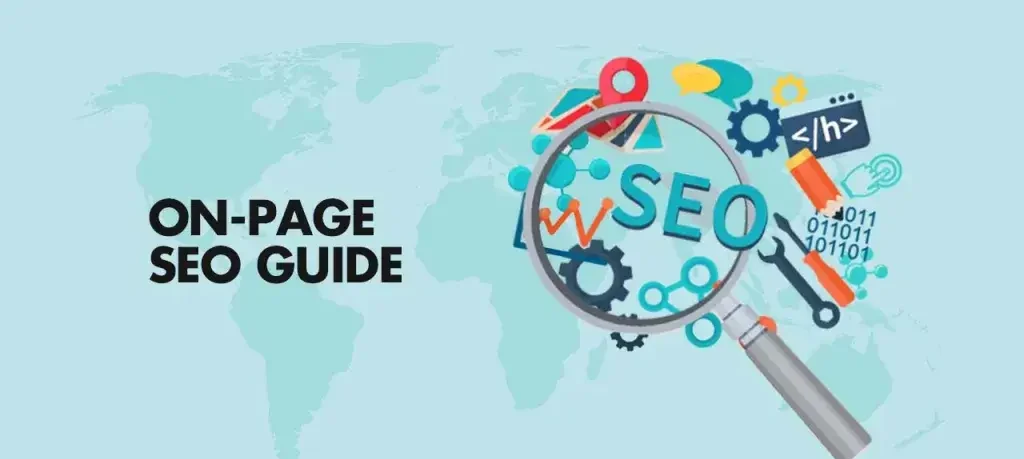Crafting Compelling Meta Descriptions for SEO

Introduction: In the world of Crafting Compelling SEO, meta descriptions are often overlooked, but they play a crucial role in increasing click-through rates (CTR) and improving search engine rankings. A compelling meta description provides a snapshot of your content, enticing users to click through to your site. In this guide, we’ll explore the art of crafting meta descriptions, discuss their significance in SEO, and share actionable tips to create descriptions that work. What Are Meta Descriptions? A Crafting Compelling Meta Descriptions for SEO is a brief text snippet embedded in a webpage’s HTML, created to summarize the page’s content for both search engines and visitors. While meta descriptions are not a direct ranking factor for search engines like Google, they play a significant role in influencing click-through rates (CTR) by providing searchers with a quick preview of the content. Key Features of a Meta Description: Length: Typically between 150-160 characters (though this can vary slightly depending on the search engine or device). Content: Should be concise, clear, and relevant to the page’s content. Purpose: To encourage users to click on the search result by making the content seem useful, interesting, and relevant to their query. No Direct Ranking Impact: While meta descriptions themselves do not directly affect rankings, a compelling meta description can lead to more clicks, which in turn can positively influence rankings indirectly. Best Practices for Writing Meta Descriptions: Be Descriptive: Summarize the page’s content accurately to match the user’s query. Use Keywords: Include target keywords where appropriate, but avoid keyword stuffing. Make It Actionable: Use calls to action (e.g., “Learn more”, “Get started”, “Discover tips”) to encourage clicks. Unique for Each Page: Ensure every page on your site has a unique meta description.Match User Intent: Tailor the description to the type of content and what the user is likely searching for. Why Are Meta Descriptions Important? Meta descriptions are a crucial element of on-page SEO and play a significant role in driving traffic to your website. Key Elements of a Good Meta Description 1. Length Matters: 2. Use Keywords Wisely: 3. Incorporate a Call-to-Action (CTA): 4. Make It Unique: 5. Provide Value: Crafting Perfect Meta Descriptions: Step-by-Step Guide Step 1: Understand Your Audience: Know your target audience’s search intent and preferences. This ensures your meta description resonates with their needs. Step 2: Analyze Competitors: Examine competitor meta descriptions for inspiration but focus on making yours stand out. Step 3: Highlight Benefits: Emphasize what sets your content apart, whether it’s a detailed guide, exclusive offers, or actionable tips. Step 4: Include Keywords: Integrate keywords naturally to align with user queries. Step 5: Add a CTA: Motivate users to take the desired action with an effective CTA. Common Mistakes to Avoid Keyword Stuffing: Overusing keywords can make the description sound unnatural. Too Generic: Avoid vague descriptions that don’t provide specific value. Overlooking Mobile Users: Ensure your description is mobile-friendly, as most searches now happen on mobile devices. Conclusion: By focusing on clarity, relevance, and engagement, you can create meta descriptions that not only improve your CTR but also enhance your site’s overall SEO performance. Implement these tips to optimize your meta descriptions and watch your organic traffic grow! Also Read: Writing SEO-Optimized Title Tags
How to Choose the Right Keywords

Introduction: Choose the right keywords is crucial for SEO success, as it helps ensure your content reaches the right audience. Start by understanding your target audience’s search intent and using tools like Google Keyword Planner or Ahrefs to identify high-traffic, low-competition terms. Incorporate keywords naturally into your content while avoiding keyword stuffing. Finally, regularly update your keyword strategy to stay aligned with changing search trends and algorithm updates. Why Are Keywords Important? Keywords are important because they are the bridge between what users are searching for and the content you offer. By using relevant keywords, you increase the chances of your website appearing in search engine results, making it easier for potential visitors to find you. Proper keyword usage also helps search engines understand the context and relevance of your content, which can improve your rankings. Additionally, keywords help guide your content strategy by ensuring it aligns with the interests and needs of your target audience. In short, they are essential for driving organic traffic, boosting visibility, and achieving your marketing goals. Steps to Choose the Right Keywords Choose the right keywords is a crucial aspect of any successful SEO strategy. Keywords help connect your content with the people who are actively searching for it. But how do you identify the most effective keywords to target? Here’s a step-by-step guide to help you make informed decisions when selecting keywords for your website or blog. 1. Understand Your Audience and Their Intent: Before diving into keyword research, it’s essential to understand who you’re writing for. Who is your target audience, and what problems are they trying to solve? Ask yourself what questions they might have related to your niche. Understanding the search intent—whether informational, transactional, or navigational—will help you choose keywords that align with what your audience is looking for. 2. Conduct Thorough Keyword Research: Keyword research is the foundation of a solid SEO strategy. Use tools like Google Keyword Planner, Ahrefs, or SEMrush to discover keywords that are relevant to your content. Focus on terms that have a good balance of search volume (how many people search for it) and competition (how hard it is to rank for). Long-tail keywords—specific, multi-word phrases—are often less competitive and can help you rank more easily while attracting highly-targeted traffic. 3. Analyze Keyword Competition: Once you’ve gathered a list of potential keywords, assess the competition. A high-competition keyword may be difficult to rank for, especially if you’re just starting. Try to target a mix of competitive keywords for long-term goals and low-competition keywords that can deliver quicker results. Look at the top-ranking content for these keywords to gauge how tough the competition really is. 4. Evaluate Keyword Relevance: Finally, make sure the keywords you select are highly relevant to your content. Irrelevant keywords, even if they have high search volume, can attract traffic that won’t convert into leads or sales. Your keywords should naturally fit within your content and provide value to your audience. Types of Keywords Short-Tail Keywords: General terms with high search volume but stiff competition (e.g., “SEO”). Long-Tail Keywords: More specific phrases with lower search volume (e.g., “how to choose SEO keywords”). LSI Keywords: Latent Semantic Indexing keywords help search engines understand context by including related terms. Common Mistakes to Avoid Overstuffing Keywords: Keyword overuse can result in search engine penalties, as it may be seen as an attempt to manipulate rankings rather than provide valuable content. Ignoring Search Intent: Choosing keywords that don’t align with user intent will hurt engagement. Neglecting Analytics: Ignoring analytics can hinder your progress. Consistently monitoring your performance allows you to adjust and optimize your strategy for better results. Conclusion: Choose the right keywords is essential for achieving SEO success. By getting to know your audience, leveraging effective tools, and prioritizing search intent, you can enhance your rankings and attract the right kind of traffic. Avoid common mistakes and continually refine your approach to stay ahead of the competition. Also Read: Crafting Compelling Meta Descriptions for SEO
Starting with Keyword Research Basics

Introduction: Starting with Keyword research basics forms the core of an effective SEO strategy. Whether you’re creating blog posts, product pages, or even just looking to improve your website’s overall visibility, selecting the right keywords is crucial. The process involves finding terms and phrases that have a high search volume and low competition, while also aligning with your content’s purpose. In this guide, we’ll cover the basics of keyword research and show you how to get started with effective tools and techniques. Mastering keyword research will give you the insights needed to drive more organic traffic to your site. Let’s dive into the fundamentals of finding and using the right keywords. What is Keyword Research? Keyword research involves identifying and analyzing the search queries people use in search engines to find products, services, or information. The goal is to discover keywords that are relevant to your business or website, have a decent search volume, and are attainable in terms of competition. By understanding these keywords, you can optimize your website’s content to match what users are actively searching for, increasing your chances of appearing in search engine results. Starting with keyword research basics enables you to craft content that connects with your audience, boosts your site’s visibility, and attracts organic traffic. It plays a vital role in SEO by ensuring your content matches what users are searching for. The two primary categories of keywords to prioritize are: Short-tail keywords (also called “head” keywords): These are broad, one or two-word phrases with high search volume but often high competition. Long-tail keywords: These are longer, more detailed phrases that tend to have lower search volume but also face less competition. Why is Keyword Research Important? Keyword research is essential because it helps you understand what your audience is searching for, allowing you to create content that meets their needs. It improves your website’s visibility by targeting relevant terms, which boosts search engine rankings. By choosing the right keywords, you can attract more qualified traffic and increase conversions. It also guides your content strategy and informs your paid advertising efforts. Overall, keyword research is crucial for driving targeted traffic and staying competitive in your niche. Step-by-Step Guide to Keyword Research Keyword research plays a vital role in building an effective SEO strategy. It involves identifying the terms and phrases people are typing into search engines to find products, services, or information. By understanding these search behaviors, you can optimize your content to meet the needs of your audience and drive organic traffic. “Follow this easy, step-by-step process to begin your journey:” 1. Understand Your Niche and Audience: Start by thinking about your audience and what problems they face. Consider the language they might use to search for solutions. This will help you define your primary keyword themes and get a sense of what your target audience is looking for. 2. Brainstorm Seed Keywords: Seed keywords are general terms that are closely associated with your niche. For example, if you run a travel blog, your seed keywords might include “travel tips,” “budget travel,” or “destinations.” These terms will serve as a foundation for your research. 3. Use Keyword Research Tools: Next, enter your seed keywords into keyword research tools like Google Keyword Planner, SEMrush, or Ahrefs. These tools will show you related keywords, search volumes, and competition levels, helping you expand your list and find keyword opportunities. 4. Analyze Keyword Metrics: Look at key metrics such as search volume, competition, and keyword difficulty. Focus on keywords that strike a balance between decent search volume and low competition. Long-tail keywords, which are more detailed and specific, are typically less competitive and can bring in highly relevant traffic. 5. Organize Keywords Into Themes: Organize your keywords into groups according to relevant topics or themes. This will help you create content clusters and organize your website in a way that makes sense to both users and search engines. 6. Track and Refine: Keyword research isn’t a one-time task. Track your results regularly and refine your approach as market trends and competition shift. Common Mistakes in Keyword Research: Keyword research is essential for SEO, but many make critical mistakes that can limit success. One common mistake is focusing too much on high-volume keywords, which often come with high competition. This can make it harder for new sites to rank. Another error is neglecting user intent; not all search queries are the same, and failing to target the right intent can lead to irrelevant traffic. Overlooking competitor analysis is also a mistake, as understanding what keywords your competitors are targeting can uncover valuable opportunities. Focusing Only on High-Volume Keywords: Prioritizing keywords with the highest search volume can lead to intense competition, making it harder to rank for them, especially for newer websites. Ignoring User Intent: Not considering whether the searcher is looking for information, making a purchase, or navigating to a specific site can result in attracting irrelevant traffic. Overlooking Keyword Difficulty: Targeting highly competitive keywords without assessing your ability to rank for them can lead to wasted effort. Not Considering Long-Tail Keywords: Focusing only on short, broad keywords can overlook the value of long-tail keywords that are more specific and less competitive. Ignoring Local or Niche Keywords: For businesses serving a specific region or niche market, failing to target local or specialized keywords can result in missing valuable leads. Keyword Stuffing: Overloading content with keywords in an unnatural way can harm user experience and even lead to penalties from search engines. Conclusion Starting with Keyword research basics is an ongoing process crucial for any successful SEO campaign. By understanding your audience and using the right tools, you can create a strategy that drives traffic, boosts engagement, and grows your business. Take the time to analyze, implement, and optimize your keywords to stay ahead in the competitive online landscape. Also Read: How to Choose the Right Keywords
How Search Engines Rank Websites

Introduction: In today’s digital world, millions of websites compete for visibility in search engine results. Whether you’re a blogger, an e-commerce site owner, or just someone interested in understanding how search engines rank websites, knowing the mechanics behind ranking can help you improve your online presence. But how exactly do search engines like Google, Bing, and others decide which websites appear at the top of search results? These algorithms are constantly evolving, with Google alone updating its ranking systems hundreds of times each year. In this blog post, we’ll explore the key factors that search engines use to rank websites, so you can optimize your site to improve its position in search results. What is Search Engine Ranking? Search engine ranking refers to the position a website or web page holds in search engine results pages (SERPs) for a given search query. The better a website ranks, the greater its chances of attracting organic (unpaid) traffic. Search engines use algorithms—sets of rules and calculations—to determine which pages are most relevant and useful to users based on their search intent. The ultimate goal of search engines is to provide users with the best possible results that meet their needs. As a result, websites that provide valuable, well-structured, and relevant content are more likely to rank highly. Essential Elements Search Engines Consider When Ranking Websites 1. Content Quality and Relevance: The content on a webpage is a crucial factor in determining its ranking. Search engines assess how relevant and informative the content is in relation to the search query. They look for pages that provide comprehensive answers to a user’s question, offer in-depth analysis, and are well-written and easy to understand. Tips for optimizing content: 2. Backlinks (Link Building): Backlinks, or incoming links from other websites to your site, are one of the strongest ranking factors. Search engines consider backlinks as a form of endorsement from other websites, signaling trust and authority. If authoritative and trustworthy websites link to your content, it signals that your website is also trustworthy. However, not all backlinks are created equal. High-quality backlinks from reputable sites in your niche will have a more significant impact on your rankings than low-quality links from spammy websites. Tips for improving your backlink profile: 3. On-Page SEO Factors: On-page SEO refers to the optimization of elements within a webpage itself to improve its search engine visibility. These elements include: Title Tags: The title of your page appears as the clickable link in search results. A compelling, keyword-optimized title can boost your CTR (click-through rate). Meta Descriptions: While not a direct ranking factor, a well-crafted meta description can encourage users to click on your page. URL Structure: Search engines prefer clean, descriptive URLs with relevant keywords (e.g., “yourdomain.com/how-to-rank-websites”). Header Tags (H1, H2, H3): These help break up content and indicate its structure to search engines. Internal Linking: Linking to related pages on your site assists search engines in grasping your site’s structure and improves content indexing. Image Alt Text: Search engines can’t “read” images, so including descriptive alt text helps them understand what the image is about. Tips for optimizing on-page elements: 4. User Experience (UX): User experience is becoming an increasingly important factor for search engines when determining rankings. If users have a bad experience on your website—whether because of slow load times, a cluttered design, or difficult navigation—search engines may rank your site lower. Key user experience factors include: Page Load Speed: Websites that load quickly tend to rank better. Slow pages lead to higher bounce rates and lower engagement. Mobile Friendliness: With the rise of mobile browsing, Google uses mobile-first indexing, meaning it ranks websites based on how they perform on mobile devices. Site Design and Navigation: A clean, well-organized design with intuitive navigation ensures users can easily find what they need. Low Bounce Rate and High Engagement: Websites that keep users engaged with high-quality content tend to have lower bounce rates, which can positively impact rankings. Tips for improving user experience: 5. Technical SEO: Technical SEO optimizes your website, allowing search engines to crawl and index its content more effectively. A technically optimized website improves its chances of ranking higher by making it easier for search engines to understand your content. Key technical SEO factors include: Site Speed: Google prioritizes fast-loading sites in its rankings, as speed impacts both user experience and crawl efficiency. Sitemaps: Having an XML sitemap helps search engines index your pages more efficiently. Robots.txt: This file directs search engines on which pages they are allowed to crawl and which ones to skip. Secure Sockets Layer (SSL): Sites with SSL certificates (i.e., URLs starting with HTTPS) are favored by search engines because they offer a secure browsing experience. Structured Data (Schema Markup): This is code that you add to your site to help search engines better understand the content on your pages (e.g., product reviews, events, recipes). Tips for improving technical SEO: 6. Search Engine Algorithm Updates: Search engines like Google constantly refine their algorithms to provide users with the most relevant, high-quality search results. Major updates, like Google’s Panda, Penguin, and Core Web Vitals, can cause significant shifts in search rankings. For example, Google’s Core Web Vitals update, which focuses on user experience factors like page speed and interactivity, has become increasingly important for ranking. Keeping up with these updates and adjusting your site’s SEO strategy accordingly is key to maintaining strong rankings. Tips for staying updated: Conclusion: Search engines use a combination of factors to rank websites, from high-quality content and backlinks to user experience and technical optimization. While ranking algorithms are constantly changing, the core principles remain the same: search engines aim to provide users with the best possible results. By focusing on creating valuable, well-structured content, optimizing your site for both users and search engines, and staying up to date with algorithm changes. Also Read: Starting with Keyword Research Basics
What is SEO and Why It Matters

Introduction: Search Engine Optimization (SEO) is an essential digital marketing practice aimed at improving the visibility and ranking of websites in search engine results pages (SERPs). In a world where millions of people turn to search engines like Google, Bing, and Yahoo every second to find information, products, services, and answers, having a website that ranks high in search results can make a significant difference in your online presence and business success. In this blog post, we’ll break down what SEO is, why it’s matters, and how it can benefit your website and business. What is SEO? SEO is the process of optimizing a website to improve its chances of ranking higher in search engine results. It involves a variety of techniques, from content creation and keyword research to technical fixes on your website, aimed at making it more appealing to search engines like Google. The goal of SEO is to make your website easier for search engines to crawl, index, and ultimately rank for relevant queries. In simple terms, SEO helps your website get found by the people who are actively looking for the products, services, or information you offer. When people search for a keyword or phrase related to your business, you want your website to appear as high as possible in the search engine results. Search engines like Google use complex algorithms to determine which pages should appear in the results for any given query. These algorithms take into account numerous variables, such as: Keyword relevance: The extent to which your content aligns with the user’s search intent. Content quality: Whether your content is valuable, authoritative, and useful to the user. User experience: How easy your website is to navigate, how fast it loads, and whether it’s mobile-friendly. Backlinks: Links from other reputable websites that signal trustworthiness and authority. Technical SEO: The backend structure of your website, such as URL structure, page speed, and structured data. By optimizing for these factors, you increase your chances of ranking higher and attracting more organic (unpaid) traffic. Why SEO Matters Now that we’ve defined SEO, let’s talk about why it matters. In today’s competitive online world, SEO is crucial for several reasons: 1. Increased Visibility and Traffic: Most people don’t go past the first page of search results. In fact, studies show that about 75% of users never click beyond the first page. This means if your website doesn’t rank on the first page, you’re missing out on a large chunk of potential traffic. Higher visibility leads to more clicks and more visitors, which translates into more opportunities to convert those visitors into customers, subscribers, or leads. The more optimized your site is for search engines, the greater the potential for increased traffic and business growth. 2. Cost-Effective Marketing: SEO is matters the most budget-friendly marketing approaches you can use. Unlike paid advertising, such as pay-per-click (PPC) campaigns, SEO doesn’t require you to pay for each click or impression. While SEO does involve an investment of time and resources, the long-term benefits can far outweigh the costs. Once you’ve invested in SEO, it continues to generate organic traffic to your website without the need to keep paying for ads. This makes SEO an invaluable asset for businesses looking for sustainable and long-term results without constantly having to allocate a budget for advertising. 3. Builds Credibility and Trust: Search engines like Google strive to provide the best and most relevant results for their users. Therefore, when your website ranks highly for specific keywords, it signals to search engines that your site is an authoritative and reliable source of information on that topic. Moreover, when people trust your website, they are more likely to engage with your content, share it, or purchase your products or services. SEO helps you build this trust through high-quality content, a well-optimized user experience, and strong backlinks from reputable sources. 4. Better User Experience: Search engines favor websites that provide a seamless and engaging experience for users. Factors such as site speed, mobile optimization, easy navigation, and clear content structure all contribute to a better UX. When you optimize your site for both search engines and users, you create an environment that keeps visitors engaged longer and encourages them to take the desired actions—whether that’s purchasing a product, filling out a contact form, or reading more content. 5. Long-Term Strategy with Sustainable Results: SEO is a long-term strategy. Unlike paid ads that stop driving traffic as soon as you stop paying, the benefits of SEO can last long after the work is done. High-quality content and backlinks can continue to drive traffic to your website for months or even years. Once your website reaches a strong position in the search rankings, you’ll see the benefits of organic traffic without needing to continually pay for traffic generation. SEO builds a strong foundation for sustainable growth, as long as you keep updating and optimizing your site. 6. Competitive Advantage: Across almost every sector, there is a degree of competition present. If your competitors are investing in SEO and you aren’t, they’re likely to outrank you and steal potential customers. On the other hand, if you invest in SEO, you’re giving yourself a competitive advantage. In fact, SEO can even help you target specific long-tail keywords—more specific phrases that are often less competitive but highly relevant to your business. By targeting these keywords, you can capture a more qualified audience and increase the chances of conversion. How SEO Works: Key Components SEO involves several elements that need to be addressed in order to improve your rankings. Let’s take a quick look at some of the key components of SEO: 1. Keyword Research: Keyword research forms the cornerstone of every effective SEO strategy. It involves identifying the terms and phrases that your potential customers are searching for. By optimizing your website’s content for these keywords, you increase the chances of ranking higher for those terms. 2. On-Page SEO: On-page SEO involves refining both the content and the layout of your
How to Build High-Quality Backlinks for SEO

Introduction: In the world of SEO, How to Build High-Quality Backlinks play a crucial role in determining your site’s ranking on search engines like Google. Backlinks are simply links from other websites that point back to yours, and high-quality backlinks can significantly enhance your site’s authority and search engine ranking. However, not all backlinks are created equal. To boost your site’s SEO performance, you need to focus on acquiring high-quality backlinks. In this guide, we will explore actionable strategies for building strong backlinks to improve your SEO rankings. What are High-Quality Backlinks? High-quality backlinks are links from reputable and authoritative websites that direct traffic to your site. They signal to search engines that your content is trustworthy and valuable, boosting your site’s credibility. Quality backlinks typically come from relevant sources within your industry, enhancing their impact on SEO. Unlike low-quality links, which can harm your ranking, high-quality backlinks can significantly improve your visibility and search engine ranking. Building a strong backlink profile is essential for effective digital marketing and organic traffic growth. Factors that How to Build High-Quality Backlinks for SEO include: Relevance: The linking site should be related to your niche. Authority: Links from trusted, established websites carry more weight. Traffic: If a website gets a lot of traffic, a link from them can direct more visitors to your site. Anchor Text: The clickable text of the backlink should be natural and relevant. Why Are Backlinks Important for SEO? Backlinks play a vital role in SEO, serving as endorsements from other websites that indicate the quality and relevance of your content to search engines. They improve your site’s authority, helping it rank higher in search results. Quality backlinks can drive referral traffic, increasing your audience and potential conversions. Search engines use backlinks as a key factor in their algorithms, influencing how pages are ranked. Overall, a strong backlink profile enhances your site’s visibility and credibility in a competitive online landscape. Here are the key reasons backlinks are critical for SEO: Increased Organic Traffic: Backlinks from authoritative sites can drive traffic directly to your site. Higher Domain Authority: More quality backlinks help to increase your domain authority. Improved Search Rankings: Websites with more backlinks tend to rank higher in search engine results pages (SERPs). Faster Indexing: Search engine crawlers can discover your site faster with multiple backlinks. Effective Strategies for How to Build High-Quality Backlinks for SEO: 1. Guest Blogging: Guest blogging is a powerful content marketing strategy that involves contributing articles to other websites in your niche. It allows you to share your expertise with new audiences while building relationships within your industry. By providing valuable insights, you not only enhance your credibility but also create opportunities for networking and collaboration. Additionally, guest blogging can improve your SEO by generating high-quality backlinks to your own site. Overall, it’s an effective way to expand your reach and establish your brand’s authority. Tips for guest blogging: Focus on websites with high domain authority. Write unique, high-quality content. Avoid spammy websites or overused guest blogging platforms. 2. Create High-Quality, Shareable Content: Creating high-quality, shareable content is essential for effective social media marketing and audience engagement. This type of content resonates with your target audience, offering valuable insights, entertainment, or solutions to their problems. By focusing on quality over quantity, you enhance your brand’s reputation and encourage organic sharing across social media and other platforms. Shareable content often includes engaging visuals, compelling storytelling, and practical tips that invite interaction. Ultimately, this approach can significantly boost your visibility and drive traffic to your website. Types of content that attract backlinks: Data-driven articles In-depth guides Infographics Case studies How-to tutorials 3. Outreach and Relationship Building: Outreach and relationship building are vital components of a successful marketing strategy, focusing on establishing meaningful connections with influencers, industry peers, and potential customers. This process involves reaching out to individuals and organizations to foster collaborations, share insights, and enhance visibility. Strong relationships can lead to valuable partnerships, guest blogging opportunities, and increased brand exposure. By prioritizing genuine engagement and communication, you can create a network that supports mutual growth and success. Ultimately, effective outreach lays the foundation for lasting professional relationships that benefit all parties involved. Steps to effective outreach: 4. Use Broken Link Building: Broken link building is a strategic SEO technique that involves identifying broken links on other websites and offering your content as a replacement. This method not only helps webmasters maintain the quality of their sites but also provides you with valuable backlinks to improve your own SEO. By reaching out to site owners with a helpful solution, you position yourself as a resourceful contributor to the online community. This approach fosters goodwill and can lead to increased visibility and traffic to your site. Ultimately, broken link building is a win-win strategy that enhances both your link profile and the overall user experience on the web. How to implement broken link building: 5. Leverage Social Media for Backlinks Leveraging social media for backlinks is an effective strategy that enhances your content’s reach and visibility. By sharing your articles, blog posts, and resources across various platforms, you increase the chances of attracting attention from users and influencers. Engaging content encourages shares and interactions, leading to organic backlinks as others reference your work. Additionally, building a strong social media presence fosters relationships that can result in collaboration opportunities and guest posting. Overall, utilizing social media not only boosts your backlink profile but also strengthens your brand’s online community. Social media strategies for backlinks: Conclusion: Building high-quality backlinks is essential for boosting your SEO efforts. By implementing strategies like guest blogging, creating valuable content, outreach, and broken link building, you can secure strong backlinks that improve your website’s authority and search engine ranking. Keep in mind that when it comes to backlinks, quality is far more important than quantity. Stay consistent and patient, as building a solid backlink profile takes time, but the rewards for your SEO are well worth the effort. Also Read: Starting Your Mobile
The Ultimate Guide to On-Page SEO

Introduction to On-Page SEO: In the digital marketing world, optimizing your website for search engines is crucial. The Ultimate Guide to On-Page SEO refers to the tactics and strategies used directly on your website to improve its visibility and rankings on search engine results pages (SERPs). These include optimizing content, HTML source code, and improving user experience. In this guide, we will explore all the essential elements of On-Page SEO to help your website achieve higher rankings and better performance. Why On-Page SEO Matters: Search engines like Google use complex algorithms to rank websites. One of the factors that influence your ranking is how well your pages are optimized for relevant search queries. Good On-Page SEO helps search engines understand what your page is about, ensuring that it is shown to users who are looking for related content. Without proper On-Page SEO, even the best content can go unnoticed. Let’s dive into the most important elements of Ultimate Guide to On-Page SEO Key Components of On-Page SEO: The Ultimate Guide to On-Page SEO refers to the optimization techniques applied directly within a website’s pages to improve search engine rankings and enhance user experience. Key components include keyword optimization, where relevant terms are strategically placed in titles, headings, and content. Meta tags, such as meta descriptions and title tags, help search engines understand page content and improve click-through rates. Internal linking structures support site navigation and distribute page authority. Additionally, optimizing images, improving page load speed, and ensuring mobile-friendliness contribute to better user engagement and overall site performance. Here are the The Ultimate Guide to On-Page SEO 1. Title Tags: Title tags are HTML elements that define the title of a web page and appear in search engine results and browser tabs. They play a crucial role in SEO by helping search engines understand the content of a page and influencing click-through rates. An effective title tag should be succinct, feature pertinent keywords, and precisely convey the page’s subject matter. Optimal title tags enhance user experience by providing clear and informative titles, while also boosting the page’s visibility in search engine results. Best Practices for Title Tags: Keep it between 50-60 charactersPlace the primary keyword at the beginningMake it compelling for users to click on 2. Meta Descriptions: Meta descriptions are brief summaries of a web page’s content, typically ranging from 150 to 160 characters, that appear in search engine results beneath the page title. They serve to provide users with a concise preview of what the page offers, influencing their decision to click through to the site. Crafting compelling and relevant meta descriptions can improve click-through rates and enhance overall search engine visibility. Effective meta descriptions balance clarity, relevance, and appeal to drive more traffic to your website. Best Practices for Meta Descriptions: Keep it under 160 charactersInclude the main keywordWrite an actionable and enticing description 3. Header Tags (H1, H2, H3): Header tags (H1, H2, H3) are essential HTML elements used to structure content on web pages, enhancing both readability and SEO. The H1 tag typically represents the main heading of a page, providing a clear and concise summary of the content’s topic. Subsequent tags like H2 and H3 are used for subheadings, creating a hierarchical organization that helps both users and search engines navigate and understand the content. Proper use of header tags improves the accessibility and usability of a website, while also signaling the importance of various sections to search engines. Best Practices for Header Tags: Use one H1 tag per pageIncorporate relevant keywords naturallyUtilize H2 and H3 tags to improve content clarity and organization. 4. URL Structure: URL structure refers to the way URLs are organized and formatted to ensure clarity, usability, and search engine optimization. A well-structured URL is concise, descriptive, and includes relevant keywords, making it easier for users and search engines to understand the content of a page. Consistent URL structures improve navigation and help maintain a logical hierarchy within a website. Properly designed URLs can enhance search engine rankings and user experience by facilitating better indexing and reducing bounce rates. Best Practices for URL Structure: Keep it simple and readableUse hyphens to separate wordsAvoid using numbers or special characters 5. Content Optimization: Content optimization involves refining and enhancing digital content to improve its visibility, relevance, and effectiveness across various platforms and search engines. This process includes techniques such as keyword integration, improving readability, and ensuring that content aligns with user intent and search algorithms. Effective content optimization enhances user engagement, drives organic traffic, and boosts overall site performance. It also involves updating and repurposing existing content to maintain its relevance and effectiveness over time. Best Practices for Content Optimization: Use target keywords naturally without keyword stuffingWrite at least 1,000 words per page for in-depth coverageIntegrate visuals like images, videos, and infographics to boost user interaction and interest.Regularly update content to keep it relevant 6. Internal Linking: Internal linking is a crucial aspect of website SEO and user experience, involving the practice of linking to other pages within the same domain. This technique helps search engines understand the structure and hierarchy of a site, which can improve its crawlability and indexing. By strategically placing internal links, you can guide users to related content, enhancing navigation and engagement. Effective internal linking also distributes page authority across your site, potentially boosting the ranking of individual pages. Best Practices for Internal Linking: Link to relevant pages within your siteUse descriptive anchor text that includes keywordsRefrain from cluttering a page with excessive internal links. 7. Image Optimization: Image optimization is the process of enhancing the quality and performance of images for web use. It involves reducing file sizes while maintaining visual integrity, which improves website loading times and user experience. By using techniques such as compression, format selection, and resolution adjustments, image optimization can significantly boost site performance and SEO rankings. Efficient image optimization also reduces bandwidth usage and storage costs. Best Practices for Image Optimization: Use descriptive, keyword-rich file namesInclude descriptive alt text to enhance
The Impact of Social Media on SEO

Introduction: Social media has transformed the dynamics of personal interaction, content sharing, and media consumption. In recent years, its impact on digital marketing strategies has grown exponentially, and one of the major areas where social media plays a significant role is Search Engine Optimization (SEO). SEO is all about improving your website’s visibility in search engine results, and social media can boost that visibility when used correctly. In this blog post, we will explore the relationship between social media and SEO, how social signals impact search rankings, and some effective strategies to integrate social media into your SEO efforts. How Does Social Media Impact SEO? Social media has become an integral part of digital marketing, and its impact on SEO is increasingly significant, though not always direct. While search engines like Google do not use social media signals as direct ranking factors, the influence of social media on SEO is profound in several key ways. Firstly, social media boosts content visibility. When users share and engage with content on social media platforms, it drives traffic back to the website. Increased traffic often leads to improved engagement metrics, such as longer time on site and lower bounce rates, which are positive indicators for search engines. Secondly, social media enhances brand awareness and authority. A robust social media presence helps establish a brand’s credibility and trustworthiness. Frequent interactions and mentions on social media can lead to more branded searches and direct traffic, which search engines interpret as a sign of a credible and relevant website. Additionally, social media can indirectly contribute to backlink generation. These backlinks are crucial for SEO as they contribute to a site’s domain authority and search engine ranking. In summary, while social media does not directly affect search engine rankings, its role in driving traffic, enhancing brand authority, and facilitating backlink acquisition makes it a valuable asset in any SEO strategy. Increased Visibility and Traffic: The more your content is shared across social media platforms, the greater the chance of reaching a wider audience. When users click on your social media links and visit your website, this can drive a significant amount of traffic. High-quality, consistent traffic signals to search engines that your site is valuable, which may improve your rankings over time. Building Backlinks: Backlinks are one of the most critical ranking factors for SEO. Social media provides a platform for content distribution, and when your content is shared, it increases the likelihood of being picked up by other websites and blogs. This increases the chances of earning high-quality backlinks. Brand Authority and Engagement: Social media allows brands to connect directly with their audience, increasing engagement and building trust. When your brand becomes well-known and respected, it may naturally receive more backlinks, which helps SEO. Content Indexing: Google and other search engines use bots to crawl and index content. Social media platforms such as Twitter and Facebook are highly indexed by Google, meaning your shared content on social media can show up in search results. This helps to increase your website’s overall visibility in search engines. Local SEO Benefits: Social media platforms, especially ones like Facebook, help businesses with local SEO by allowing them to build a local presence and engage with the local community. Optimizing social profiles with local information (name, address, and phone number) can help you rank better for local searches. Strategies to Improve SEO Through Social Media: In today’s digital landscape, where search engine optimization (SEO) and social media play pivotal roles, integrating these two elements is crucial for online success. Leveraging social media to enhance SEO can significantly boost a website’s visibility and organic reach. Social media platforms offer a wealth of opportunities to increase brand awareness, drive traffic, and foster user engagement. By developing targeted strategies that align with SEO goals, businesses can harness the power of social media to improve their search engine rankings. This involves creating shareable content, engaging with followers, and using social signals to influence search algorithms. Additionally, optimizing social media profiles and content for relevant keywords can drive more targeted traffic. Effective use of social media not only amplifies content distribution but also strengthens backlinks and domain authority. Understanding the interplay between social media and SEO is key to developing a cohesive strategy that maximizes online presence. In this guide, we will explore actionable strategies to enhance SEO through social media, providing insights into how these tactics can drive measurable results and elevate digital performance. Optimize Your Social Profiles: Your social profiles should be optimized just like your website. Ensure you use keywords in your bio, include relevant links to your website, and have consistent branding across all platforms. Search engines often display social media profiles in search results, so an optimized profile can increase visibility. Create High-Quality, Shareable Content: The higher the engagement of your content, the greater its chances of being shared. Focus on creating content that resonates with your audience, solves their problems, or provides value. Use catchy headlines, compelling visuals, and calls to action to encourage sharing. Utilize Hashtags and Keywords: Hashtags and keywords on platforms like Twitter, Instagram, and LinkedIn can help your content be discovered by users searching for relevant topics. They also aid search engines in understanding the context of your content, which may help improve rankings. Encourage Social Sharing: Make it easy for visitors to share your website’s content by including social share buttons on your blog posts and articles. When users share your content, it increases traffic to your site, which could boost SEO over time. Collaborate with Influencers: Influencers have a strong presence on social media and can help amplify your content. Partnering with influencers can lead to increased shares, engagement, and even backlinks, which will positively impact your SEO efforts. Monitor Social Signals: Social signals such as likes, shares, comments, and follows can provide valuable insights into what your audience enjoys. Use this data to tailor future content that will engage your audience and drive more traffic to your website. Conclusion: In today’s digital
How to Optimize Your Website for Search Engines

Introduction: How to optimize your website for search engines: In today’s digital world, search engine optimization (SEO) is an essential component of any successful online presence. It’s no longer enough to simply create a website and expect visitors to find you. Instead, you must actively optimize your website so that it ranks higher on search engine results pages (SERPs), helping you attract more organic traffic and boost your overall visibility. Below, we will outline comprehensive steps on how to optimize your website for search engines in great detail. 1. Conduct Thorough Keyword Research At the heart of a successful SEO plan lies thorough keyword research. Identifying the right keywords that your target audience is searching for helps you align your content with their needs. To start, utilize tools such as Google Keyword Planner, Ahrefs, or SEMrush to discover relevant keywords with high search volume and low competition. Focus on: Integrate these keywords into your: 2. Optimize Your Website’s On-Page SEO On-page SEO is crucial for helping search engines understand what your website is about. It focuses on refining each page to achieve higher rankings and attract more targeted visitors. Key components include: Meta Tags Optimization: Ensure your title tags are compelling, concise, and include your primary keyword. The optimal length is between 50-60 characters. Similarly, your meta descriptions should be around 150-160 characters and written to entice users to click through, incorporating secondary keywords when appropriate. Header Tags and Content Structure: Utilize header tags (H1, H2, H3) strategically to organize and enhance the readability of your content. The H1 tag should include your primary keyword and give a clear indication of the page’s main topic. H2 and H3 tags should be used to divide your content into easily scannable sections, each optimized with relevant keywords. Internal and External Linking: Integrate internal links that point to other pages on your site. This helps search engines crawl your website more efficiently and improves user experience by guiding visitors to related content. Additionally, add external links to authoritative sources, signaling to search engines that your content is well-researched. 3. Improve Your Website’s Loading Speed Website speed is a critical ranking factor. Slow-loading websites lead to poor user experiences and higher bounce rates, both of which negatively affect your SEO performance. Google’s PageSpeed Insights tool assists in pinpointing opportunities for performance enhancement. To boost loading speeds: 4. Ensure Mobile-Friendliness With the rise of mobile browsing, mobile optimization is now a necessity. Google employs mobile-first indexing, prioritizing the mobile version of content for both indexing and ranking purposes. To ensure your website is mobile-friendly: Google’s Mobile-Friendly Test tool can help you identify issues and ensure your site is optimized for mobile devices. 5. Create High-Quality, Engaging Content In the realm of SEO, high-quality content remains the ultimate authority. High-quality, engaging content keeps visitors on your website longer, reduces bounce rates, and increases the likelihood of social sharing and backlinks. When creating content: 6. Optimize for Voice Search Voice search is growing rapidly due to the increasing use of devices like Google Home, Alexa, and Siri. Optimizing for voice search involves focusing on natural language queries and question-based keywords. To do this: 7. Build High-Quality Backlinks Backlinks continue to be a crucial factor for rankings, as search engines interpret them as validations of your content’s credibility and authority. However, prioritize acquiring high-quality links from reputable and pertinent sites, as not all backlinks hold the same value. Tactics to build backlinks include: 8. Leverage Technical SEO Technical SEO refers to optimizing the backend of your website to help search engines crawl and index your content efficiently. Important aspects of technical SEO include: XML Sitemap: Generate and submit an XML sitemap to search engines such as Google. This helps them understand your site structure and ensures all pages are indexed properly. Robots.txt File: A properly configured robots.txt file can guide search engine crawlers and prevent them from indexing certain pages, such as duplicate content or pages under development. SSL Certificate: Secure your website with HTTPS by implementing an SSL certificate. This not only improves security but also boosts SEO, as Google favors secure websites. Canonical Tags: Use canonical tags to prevent duplicate content issues. This helps consolidate page authority by signaling which version of a page is the original source. 9. Optimize for Local SEO For businesses with a physical presence, focusing on local SEO is crucial. Ensure you: 10. Track Your Progress with SEO Tools Once your optimizations are in place, it’s important to continually track your progress using SEO tools such as Google Analytics, Google Search Console, and Ahrefs. These tools offer crucial insights into your website’s performance, enabling you to: Conclusion: Effective SEO requires a combination of keyword optimization, technical enhancements, and content quality. By following these steps, your website will be better positioned to rank higher in search engine results, attract more organic traffic, and ultimately achieve long-term success. Also Read: The Impact of Social Media on SEO
The Importance of Keyword Research in SEO

Introduction: The Importance of Keyword Research in SEO: In the expansive and constantly shifting world of digital marketing, keyword research serves as a fundamental cornerstone for crafting a successful SEO strategy. It’s the process of identifying and analyzing the search terms that people use to find products, services, or information online. By understanding these terms, businesses can optimize their websites to meet the needs of their target audience and improve their visibility in search engine results. This article explores why keyword research is so crucial for SEO and how it can drive success for your online presence. Understanding Keyword Research: Keyword research involves discovering the words and phrases that potential customers use when searching for information related to your business. It’s not just about finding popular terms but understanding the intent behind those searches. This process helps you align your content with what users are actually looking for, making it easier for them to find you. Why Keyword Research Matters Aligning with User Intent: A key element of keyword research is grasping the underlying intent behind user searches. People search with a specific purpose in mind, whether they’re looking to buy a product, seek information, or solve a problem. By researching keywords, you can gain insights into what your audience is searching for and tailor your content to meet those needs. This alignment enhances user satisfaction and boosts the chances of turning visitors into loyal customers. Improving Search Engine Rankings: Search engines like Google use complex algorithms to rank websites based on their relevance to search queries. By incorporating the right keywords into your content, you signal to search engines that your website is relevant to those queries. This relevance is a key factor in achieving higher rankings on search engine results pages (SERPs). Better rankings lead to increased visibility and more organic traffic to your site. Identifying Content Opportunities: The Importance of Keyword Research in SEO can reveal gaps in your existing content and highlight opportunities for new content creation. This knowledge allows you to create content that addresses these opportunities, attracting more visitors and positioning yourself as an authority in your field. Understanding Your Competition: Knowing which keywords your competitors are targeting can provide valuable insights into their strategies and help you identify opportunities to differentiate yourself. By analyzing competitor keyword data, you can uncover gaps in their approach and find ways to outperform them in search rankings. This competitive analysis is essential for staying ahead in a crowded digital marketplace. Driving Targeted Traffic: Effective keyword research helps you attract a more targeted audience to your website. By focusing on specific, relevant keywords, you can draw visitors who are more likely to be interested in your products or services. This targeted traffic is more valuable than generic visitors, as it leads to higher engagement rates and better conversion opportunities. Optimizing Paid Advertising Campaigns: While The Importance of Keyword Research in SEO, it also plays a vital role in paid advertising campaigns. Platforms like Google Ads rely on keyword targeting to display ads to relevant users. By using keyword research to inform your ad campaigns, you can ensure that your ads reach the right audience and maximize your return on investment. How to Conduct Keyword Research Brainstorm Initial Keywords: Begin by generating a list of possible keywords pertinent to your business, products, or services. Consider the phrases and terms your customers are likely to use when looking for what you provide. Consider different variations and synonyms to create a comprehensive list. Use Keyword Research Tools: Leverage keyword research tools to broaden your list and collect data on search frequency, competitive landscape, and associated terms. Tools like Google Keyword Planner, SEMrush, Ahrefs, and Ubersuggest provide valuable insights into keyword performance and help you refine your list. Analyze Search Intent: Evaluate the search intent behind each keyword to ensure it aligns with your content goals. Classify keywords according to whether they reflect informational, navigational, or transactional intent. This categorization helps you create content that meets users’ specific needs. Evaluate Keyword Competition: Assess the level of competition for each keyword to determine how challenging it will be to rank for that term. High-competition keywords may require more effort and resources to achieve top rankings, while lower-competition keywords may offer easier opportunities for success. Prioritize Keywords: Based on your research, prioritize keywords that offer the best balance between search volume, competition, and relevance to your business. Focus on a mix of high-volume, competitive keywords and long-tail keywords that cater to more specific search queries. Monitor and Adjust: Keyword research isn’t a one-off activity; it’s an ongoing endeavor. Regularly monitor the performance of your targeted keywords and adjust your strategy based on changes in search trends, competition, and user behavior. Staying up-to-date with keyword data ensures that your SEO efforts remain effective and aligned with your goals. Best Practices for Keyword Research Focus on Long-Tail Keywords: Long-tail keywords are extended, highly specific search queries that typically face less competition and offer greater potential for conversions. By targeting these keywords, you can attract a more qualified audience and improve your chances of ranking higher in search results. Consider Local Keywords: For businesses targeting a particular geographic region, incorporate local keywords into your research. Local SEO boosts your ability to attract nearby customers and enhances your presence in regional search results. Incorporate Keywords Naturally: When optimizing your content, incorporate keywords naturally and avoid keyword stuffing. Strive for a smooth integration that improves readability and delivers meaningful value to your audience. Excessive keyword usage can harm user experience and adversely affect your search engine rankings. Update Your Keyword Strategy: Regularly review and update your keyword strategy to reflect changes in search trends, industry developments, and user behavior. An adaptive approach ensures that your content remains relevant and effective over time. Conclusion: Keyword research is a fundamental element of any successful SEO strategy, providing critical insights into user behavior, search trends, and competitive dynamics. By understanding and leveraging the search terms that users employ, businesses can optimize
